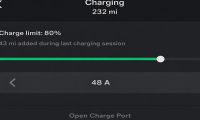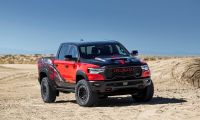The plug-in hybrid OSCar eO off-roader racer is built and designed by the Latvian company OSC with racing in mind. The team’s goal was to start and finish the Paris-Dakar, while being fully supported by the Latvian government and win the category for alternative energy vehicles.
Technically Speaking. Sporting impressive numbers, the plug-in hybrid has regenerative braking capacity and uses an electric motor rated at 150 kW nominal output and 235 kW peak power. Its nominal torque is 300 ft-lbs torque and peaks at 600 ft-lbs. Using a permanent magnet generator giving a nominal 60 kW, it is driven by a Nissan V6 packing over 63 gallons in a race safety fuel cell. All of this helps the OSCar eO achieve daily an average close to 500 miles, backed by a 52 kWh Winston Battery lithium ion battery pack. The OSCar eO was able to reach 90 mph and finish the Dakar rally in both Africa and South America.
Why Is This Important? As we mentioned, racing is the way to get noticed and sale cars. In this instance, it’s a way to show that hybrids, plug-in hybrids and electric cars can hold their own. What is of particular importance here is that the Paris-Dakar is one of the toughest race on man and machine. While internal combustion engines have been dueling it out on sand dunes and rocky roads, the idea of an electric motor propelling a car at such speeds on such a terrain was technical marvel. Finishing a Paris-Dakar is already a feast and even more within the first 100 with a new technology.











